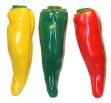Following is the recipe for a Mexican dish which Tony and I developed for our restaurant, and has become very popular.
Mexican Pork Fillets for 4
INGREDIENTS:
- 30 grams butter
- 2 cloves garlic, crushed
- 2 chili peppers, finely minced
- ½ teaspoon ground cumin
- Salt, pepper to taste
- 1 tablespoon tomato paste (puree)
- 60 grams all purpose flour
- 4 pork fillets, about 200 grams each
- 1 tablespoon vegetable oil
- 2 X 400-gram canned peeled tomatoes, coarsely chopped
- 1 large onion finely chopped
- 1 teaspoon dried thyme
PREPARATION:
Pre-heat oven to 180 c. Grease a medium sized casserole with some of the butter and set aside. Mix together the garlic, chilies, cumin, salt and pepper and tomato puree to make a smooth paste.
Using your fingers, spread the paste evenly over both sides of the fillets (this step is a bit messy, but it gets it into the pork so it’s well worth it!)
Dip the fillets into the flour to coat both sides well. In a skillet, melt the remaining butter with the oil over medium heat and sauté the fillets 3 or 4 minutes, until well browned on both sides. With a slotted spoon, put fillets into prepared casserole.
 In the same oil in the skillet, sauté the onion and green pepper for several minutes, then add the tomatoes, including the liquid from the can. When well heated, spoon the tomato mixture over the pork, and sprinkle thyme over the top. Cover the casserole and bake for 1 hour, or until pork is softer and tender.
In the same oil in the skillet, sauté the onion and green pepper for several minutes, then add the tomatoes, including the liquid from the can. When well heated, spoon the tomato mixture over the pork, and sprinkle thyme over the top. Cover the casserole and bake for 1 hour, or until pork is softer and tender.
Serve this spicy dish with your favourite potatoes (or firmly-cooked white rice!), and a crisp, cool green salad to off-set the hotness, which can vary greatly depending on the hotness of the chilies and the quantity used. (Ask Sophia!!!)
Crete wrote the book on Fusion Cooking
 I just read somewhere that ” Fusion cooking, the art of mixing ingredients and preparation styles from different countries and cultures into a uniquely flavourful dish, has been spreading across the globe like wildfire . . .” Hold on there a minute! Fusion cooking? What’s so new about that? We’ve been doing that in the Neraida Restaurant for many years, and out of necessity – not for any artsy experience.
I just read somewhere that ” Fusion cooking, the art of mixing ingredients and preparation styles from different countries and cultures into a uniquely flavourful dish, has been spreading across the globe like wildfire . . .” Hold on there a minute! Fusion cooking? What’s so new about that? We’ve been doing that in the Neraida Restaurant for many years, and out of necessity – not for any artsy experience.
Simply stated, fusion cooking is taking the locally available ingredients and substituting them for some original ingredients called for in ethnic recipes. Well, in Crete , dating back to 1990 BC (before Carrefour), we didn’t have a choice. Certain herbs and spices for an Indian curry, a Mexican chili or Chinese spare ribs just weren’t available here. So, either we hatched intricate smuggling schemes and enlisted the help of friends and family to sneak the contraband into their carry-ons – or we improvised. And, touch wood ( I’m tapping my head as we speak ) many times the resulting improvised dishes, while a bit different than the originals, were equally as good, and, in some cases, even better – like the creation of an entirely new “masterpiece.” After all, a Picasso is different than a Van Gogh, but they’re both wonderful works of art.
Today, however, it’s a different story. With the introduction of giant international retailers, such as the aforementioned Carrefour, and also Makro, we can retire from our life of culinary crime, as almost all ingredients are now available here. Sure, there is still the occasional hardcore spice that must be concealed in a diplomatic courier pouch – like Indian Ajowan seeds – but, for the most part a comprehensive search of Carrefour’s shelves will result in finding the proper ingredient – even Jalapeños. And, speaking of Jalapeños… let’s talk Mexican.
Mexican cuisine is known for its intense and varied flavors, colorful decoration, and the variety of spices that it has. Mexican gastronomy, in terms of diversity of appealing tastes and textures, is one of the richest in the world. Most of today’s Mexican cuisine is based on Native American traditions, including the Aztecs and Maya , combined with culinary trends introduced by Spanish colonists. Quesadillas , for example, are a flour or corn tortilla with cheese (the soft farmer’s cheese in this recipe, Queso Fresco, can be substituted by a good feta), and beef, chicken or pork. The indigenous part of this and many other traditional Mexican foods is the chili pepper .
By Christina Bowes